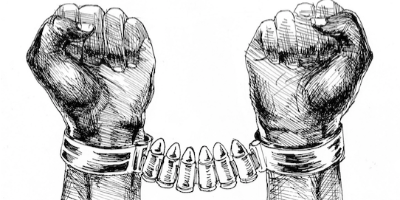nov 6, 1781 - Los Angeles is established
Description:
Los Angeles officially the City of Los Angeles and often known by its initials L.A., is the most populous city in California and the second most populous city in the United States, after New York. With an estimated population of four million, Los Angeles is the cultural, financial, and commercial center of Southern California.The written history of Los Angeles city and county began with a Spanish colony town that was populated by 11 descendants of Spanish families which were known as "Los Pobladores" that established a settlement in Southern California that changed little in the three decades after 1848, when California became part of the United States.
The Los Angeles Pobladores ("townspeople") is the name given to the 44 original settlers, 22 adults and 22 children from Sonora, who founded the town. The heads of the 11 founding families were Antonio Clemente Villavicencio, a Spaniard; Antonio Mesa, a Negro; Jose Fernando Lara, a Spaniard, Jose Vanegas, an Indian; Pablo Rodriquez, and Indian; Manuel Camero, a Mulatto; Jose Antonio Navarro, a Mestizo; Jose Moreno, a Mulatto; Basillio Rosas, an Indian; Alejandro Rosas, an Indian; and Luis Quintero, a Negro. The two Spaniards and three Indians had Indian wives; the remaining six had Mulatto wives. Despite their varied racial background, they shared a common language, culture and religion since all were Spanish subjects and Catholics.
The town grew as soldiers and other settlers came into town and stayed. In 1784 a chapel was built on the Plaza. The pobladores were given title to their land two years later. By 1800, there were 29 buildings that surrounded the Plaza, flat-roofed, one-story adobe buildings with thatched roofs made of tule. By 1821, Los Angeles had grown into a self-sustaining farming community, the largest in Southern California.
Each settler received four rectangles of land, suertes, for farming, two irrigated plots and two dry ones. When the settlers arrived, the Los Angeles floodplain was heavily wooded with willows and oaks. The Los Angeles river flowed all year. Wildlife was plentiful, including deer, antelope, and black bears, and even an occasional grizzly bear. There were abundant wetlands and swamps. Steelhead and salmon swam the rivers.
Because of the great economic potential for Los Angeles, the demand for Indian labor grew rapidly. Yaanga began attracting Indians from the islands and as far away as San Diego and San Luis Obispo. The village began to look like a refugee camp. Unlike the missions, the pobladores paid Indians for their labor. In exchange for their work as farm workers, vaqueros, ditch diggers, water haulers, and domestic help; they were paid in clothing and other goods as well as cash and alcohol. The pobladores bartered with them for prized sea-otter and seal pelts, sieves, trays, baskets, mats, and other woven goods. This commerce greatly contributed to the economic success of the town and the attraction of other Indians to the city.
Not only economic ties but also marriage drew many Indians into the life of the pueblo. In 1784, only three years after the founding, the first recorded marriages in Los Angeles took place. The two sons of settler Basilio Rosas, Maximo and José Carlos, married two young Indian women, María Antonia and María Dolores.
The construction on the Plaza of La Iglesia de Nuestra Señora de Los Ángeles took place between 1818 and 1822, much of it with Indian labor. The new church completed Governor Neve's planned transition of authority from mission to pueblo. The angelinos no longer had to make the bumpy 11-mile (18 km) ride to Sunday Mass at Mission San Gabriel.
1846, Pio Pico, a Afro-Latino successful rancher and politician in California was sworn in as Governor of California in Los Angeles.
Added to timeline:
Date:
nov 6, 1781
Now
~ 244 years ago
